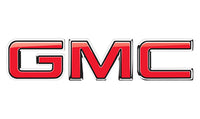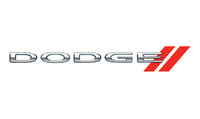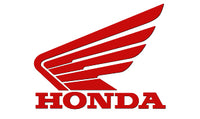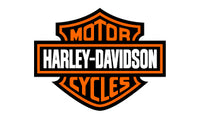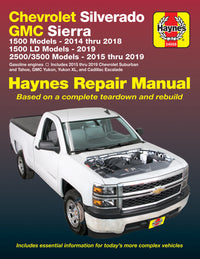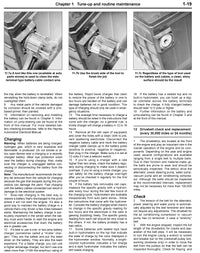IMPORTANT: Never attempt any mechanical work on your car or truck unless you know what you're doing. If possible try to have an experienced assistant nearby, and if in doubt, leave it to the professionals!
Upgrading your suspension system or replacing your shock absorber?
Maybe one of your struts needs to be replaced following years of wear and tear. Maybe you're upgrading. Nevertheless, the process to remove and replace your old suspension system will be pretty much the same. This overview is based on upgrading the various parts of the suspension system of a 2005 Infiniti G35 coupe, which includes installing new coilovers, upper control arms, lower control arms, and toe bars.
This is a general overview to show you what’s involved in working on your suspension system.
Things you need to know before starting.
You will need to figure out what kind of suspension you have. You may have an OEM divorced-style strut and spring system, only coilover spring and strut, or both. Having all coilovers will be easier to work on because you are just unbolting and replacing a single part. If you have a divorced strut and spring system, you may be removing multiple parts, the strut and a spring, in a separate location (shown below).

Safety First
You first need to understand that working on your car’s suspension system can be dangerous because you will need to lift and support the vehicle, remove the tires, and possibly crawl underneath the vehicle to reach certain areas. Here is what you need to know:
- Be sure to have the proper gloves and eyewear protection. The wheel area and underneath will have dirt and a variety of other hazards that could pose a danger to yourself.
- Make sure your vehicle is parked on level ground with tire blocks around the vehicle to keep it from moving while you’re pushing and pulling your tools to remove its parts.
- Check your lift jack and support stands for damage and suitability.
Tools You Might Need!
For the most part you’ll be removing nuts and bolts, so make sure you have the following tools handy.
- A socket set with extensions that works for your vehicle’s nuts and bolts. We’re dealing with an Japanese made car that uses metric sizes. You may have a vehicle that uses SAE sizes.
- A breaker bar might be handy for those really stuck nuts and bolts.
- An impact gun will help you get this repair done faster!
- A set of wrenches in case you need to hold a nut while losing a bolt.
- You might need a dead blow hammer or rubber mallet to knock a few rusted bolts loose.
- Penetrating oil such as WD-40 or PB Blaster
- Some good old elbow grease!
- Spring compressor tool may be needed if you are only replacing your strut and not the spring.
Let’s get started!
Step #1: Preparing and Lifting The Car
Use wheel blocks to block off the other wheels of your vehicle to keep it from moving while you are working.
Then locate the lift point of your vehicle on the wheel you will be starting with first.
Begin loosening the lug nuts on the wheel you’re removing, but do not remove them completely until the vehicle has been fully lifted and supported.
Continue lifting the vehicle and located a solid point to place your lift support to rest on. Remove the wheel completely to begin working on the suspension.

Step #2: Removing or Securing Fluid Lines
You may need to unclip or unbolt the ABS wire harness and brake hoses from the shock absorber itself. DO NOT REMOVE them from their connection points because you DO NOT need to drain fluid of any kind. They just need to be detached from the absorber so you can remove the shock.
Image of 2005 Infiniti G35 Front Suspension with brake lines

Step #3-A: Removing the Strut
Begin removing the bolts at the top of the shock absorber. For the front shock, you will need to unbolt from under the hood. For the rear, you will most likely remove them from in the fender well, check your Haynes Repair Manual for the exact location for your vehicle. Then remove the main bolt at the bottom of the shock. If you only have a coilover system
Step #3-B: If removing the coil spring on the divorced suspension system
When removing the spring from this type of system you will need to use your lift jack to support the spring bucket before unbolting. Once the jack is in place make a mark on the spring and the frame where the spring is mounted to try and remount it in the same location.
Remove the suspension links (lower radius rod and camber rod) from the front bolts at the wheel hub. This will allow the hub to move freely. Once these are unbolted, begin unbolting the spring bucket from the wheel hub.
Now use the lift jack to slowly lower the bucket to release the pressure of the spring. Continue lowering the bucket until the spring has unmounted from its mount and is loose; allowing you to fully remove the spring from the bucket.


Step #3-C: If you are converting to true rear coilovers.
Unbolt the spring bucket from the vehicle’s frame. You may need to unbolt the rear stabilizer bar in order to remove the bolt completely from the frame.
Replace the spring bucket with the aftermarket tie rod beginning with the rear bolt to the vehicle’s frame.
Step #4: Re-Mounting the new parts
Fit the new strut in place of the old one in the same orientation. Mount the bottom of the strut first with the single bolt that was removed. You may need to use your lift jack underneath the lower control arm to help you easily lift and hold the entire system up so you can mount the bolts at the top of the shock.
If re-installing OEM spring and bucket, use the floor jack to support the spring and bucket. Bolt the bucket back into the wheel’s hub first before proceeding to the suspension links.
If suspension links were also removed, you will need to mount the front lower links (radius/camber rod) to the wheel hub first. Then attach the new tie rod that replaces the spring bucket (for true rear conversions only).
Once suspension links and spring bucket have been installed. You will use the jack to lift and support he wheel hub as you mount the shock absorber to the top of the wheel well.
Finally, mount all brake lines and wiring harness back into place. Once you’ve initially mounted everything back. Check your Haynes Manual for any torque specifications for your vehicle and tighten the bolts to spec before remounting your tire and lowering your vehicle. Make sure all cam bolts are properly installed and aligned with any markings on the vehicle.




